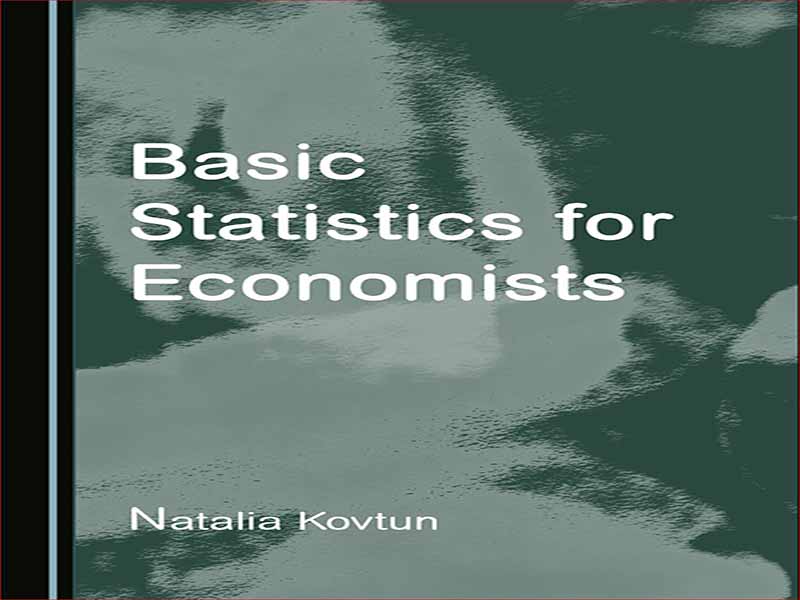- عنوان کتاب: Basic Statistics for Economists
- نویسنده: Natalia Kovtun
- حوزه: تحلیل اقتصادیِ
- سال انتشار: 2022
- تعداد صفحه: 317
- زبان اصلی: انگلیسی
- نوع فایل: pdf
- حجم فایل: 3.22 مگابایت
در درک مدرن خود، کلمه “آمار” برای اولین بار توسط دانشمند آلمانی گوتفرید آخنوال استفاده شد که این کلمه را از زبان ایتالیایی وام گرفته است. در دوره رنسانس، یک دوره ویژه در مورد دانش سیاست با نام ragione di stato یا diciplina de statu داده شد و به طور گسترده در ایتالیا مورد استفاده قرار گرفت. کلمات stato و statu به معنای “دولت” هستند و منشا کلمه آلمانی Staat و کلمه انگلیسی State هستند. افرادی که به مسائل سیاستی سر و کار داشتند و در امور مربوط به کشورهای دیگر متخصص بودند، statista نامیده می شدند. در قرن هفدهم، عبارت diciplina statistica (رشته آمار) در آلمان کاملاً شناخته شده بود. آخنوال، کاربرد صفت آماری را به شکل اسمی تبدیل کرد و کلمه Statistica را معرفی کرد که به دانش مورد نیاز بازرگانان، سیاستمداران، ارتش و روشنفکران اشاره دارد. پیدایش آمار را می توان در شکل گیری دولت ردیابی کرد، زیرا وجود دولت بدون داشتن اطلاعات لازم در مورد فعالیت هایی که در یک دولت انجام می شود و درک پتانسیل ذاتی آنها ممکن نیست. برای مثال، داشتن اطلاعاتی در مورد جمعیت و ترکیب آن، وسعت و کیفیت زمین، تعداد دام ها و حجم تجارت و غیره ضروری بود. برای مثال، شمارش ارتش داریوش امپراتور ایرانی (522) -486 ق.م) به هر جنگجوی دستور داد که سنگی بیاورد و در جای معینی بگذارد. به گفته هرودوت مورخ یونانی (484-420 قبل از میلاد)، تزار سکایی، آریانت، به هر سکایی که در معرض تهدید اعدام بود، دستور داد که یک نوک پیکان مسی بیاورند تا بتواند از تعداد رعایای خود مطلع شود. در چین باستان (قرن بیست و سوم قبل از میلاد)، اطلاعاتی در مورد: ✓ جمعیت; طبقه بندی جمعیت بر اساس جنسیت و سن؛ سودآوری زمین؛ و تغییرات در تجارت. در کتاب «شو کینگ» اثر کنفوسیوس (551-479 ق.م) به شرح سرشماری چین در سال 2238 پیش از میلاد می پردازیم. در کتاب اعداد – چهارمین کتاب موسی در کتاب مقدس – داستانی در مورد تعداد مردانی که قادر به حمل اسلحه هستند، می یابیم. در آتن، یک رکورد سازماندهی شده از جابجایی های طبیعی جمعیت، همراه با کاداستر زمین، از جمله ویژگی های دارایی زمین و همچنین شمارش امکانات، موجودی، دام، بردگان و درآمد ایجاد شده، انجام شد. در لیدیا، با استفاده از سکه در قرن هفتم قبل از میلاد، یک برآورد پولی کلی از تمام دارایی های دولت امکان پذیر شد – قبل از این زمان، فقط ابزارهای اندازه گیری طبیعی در حسابداری استفاده می شد. به این ترتیب، به تدریج ضرورت حسابرسی از موجودی یک کشور پدیدار شد.
In its modern understanding, the word “statistics” was first used by German scientist Gottfried Achenwall who borrowed this word from the Italian language. During the Renaissance, a special course on the knowledge of policy was given the name ragione di stato or diciplina de statu and widely used in Italy. The words stato and statu mean “state” and are the origin of the German word Staat and the English word state. People dealing with policy matters and who were experts on matters related to other countries were called statista. In the seventeenth century, the phrase diciplina statistica (the discipline of statistics) was quite well known in Germany. Achenwall, transformed the adjectival use of statistica into a noun form and introduced the word Statistica, which referred to knowledge needed by merchants, politicians, the military, and the intelligentsia. The emergence of statistics can be traced to the formation of the state, as the existence of the state would not be possible without having the required amount of data about the activities that take place in a state and an understanding of their inherent potential. For example, it was imperative to have information about the population and its composition, the size and quality of the land, the number of livestock, and the volume of trade, etc. For instance, to count the army the Persian Emperor Darius (522-486 BC) ordered every warrior to bring a stone and put it in a certain place. According to the Greek historian Herodotus (484-420 BC), the Scythian tsar Ariant ordered every Scythian, under threat of execution, to bring a copper arrowhead so that he could know the number of his subjects. In ancient China (twenty-third century BC), information was gathered about: the population; classification of the population by gender and age; the profitability of land; and changes in trade. In the book “Shu-King” by Confucius (551-479 BC), we find a description of the Chinese census in 2238 BC. In the Book of Numbers – the Fourth book of Moses in the Bible – we find a story about the number of the male population capable of carrying weapons. In Athens, a well-organized record of natural movements of the population was undertaken, along with the land cadastres, including the characteristics of land property as well as counts of facilities, inventory, livestock, slaves, and the revenue generated. In Lydia, with the use of coins in the seventh century BC, a generalized monetary estimation of all the state’s assets was made possible – before this time, only natural measuring instruments were used in accounting. Thus, the necessity to make an account of the inventory of a country gradually emerged.
این کتاب را میتوانید از لینک زیر بصورت رایگان دانلود کنید:
Download: Basic Statistics for Economists

































نظرات کاربران